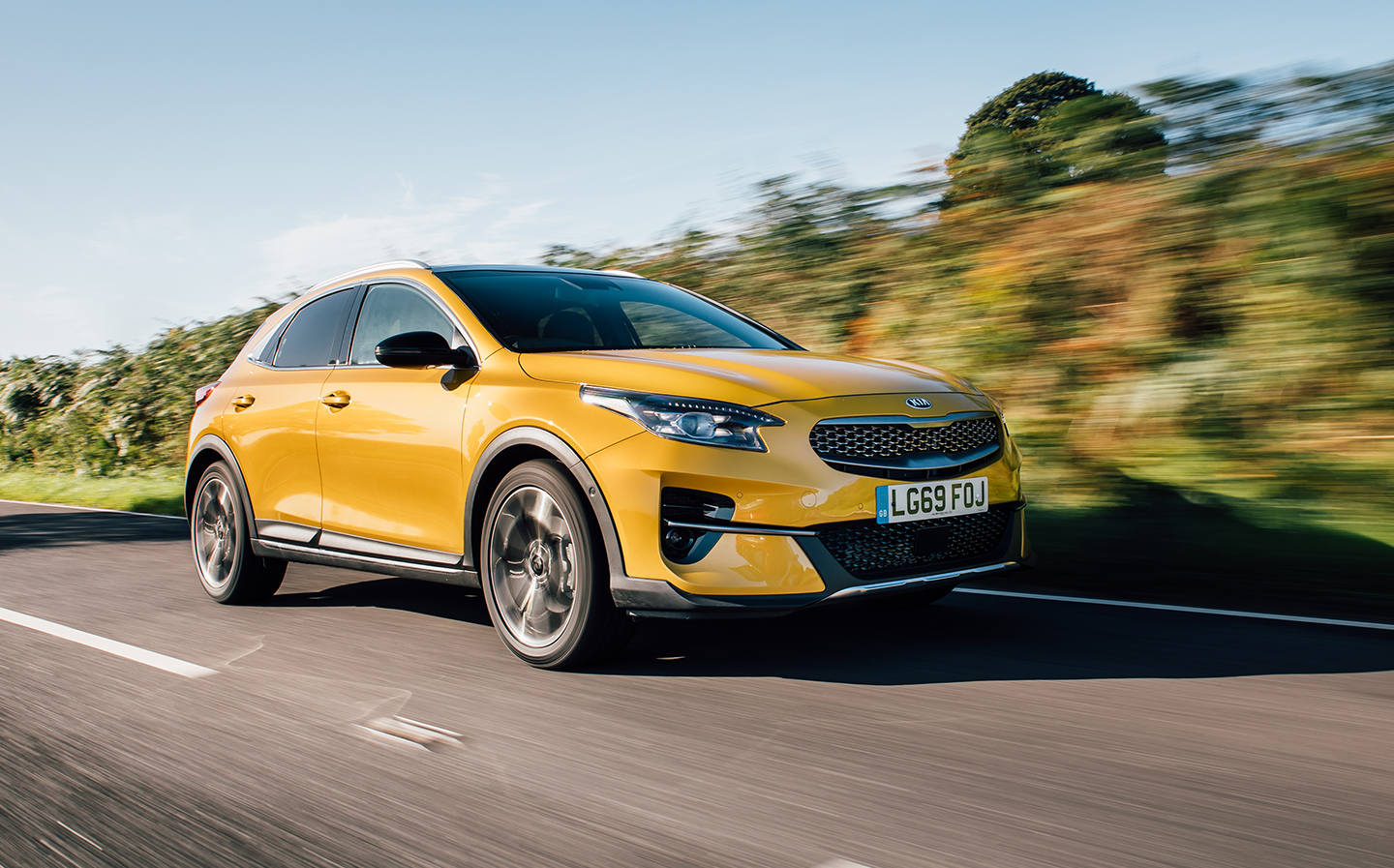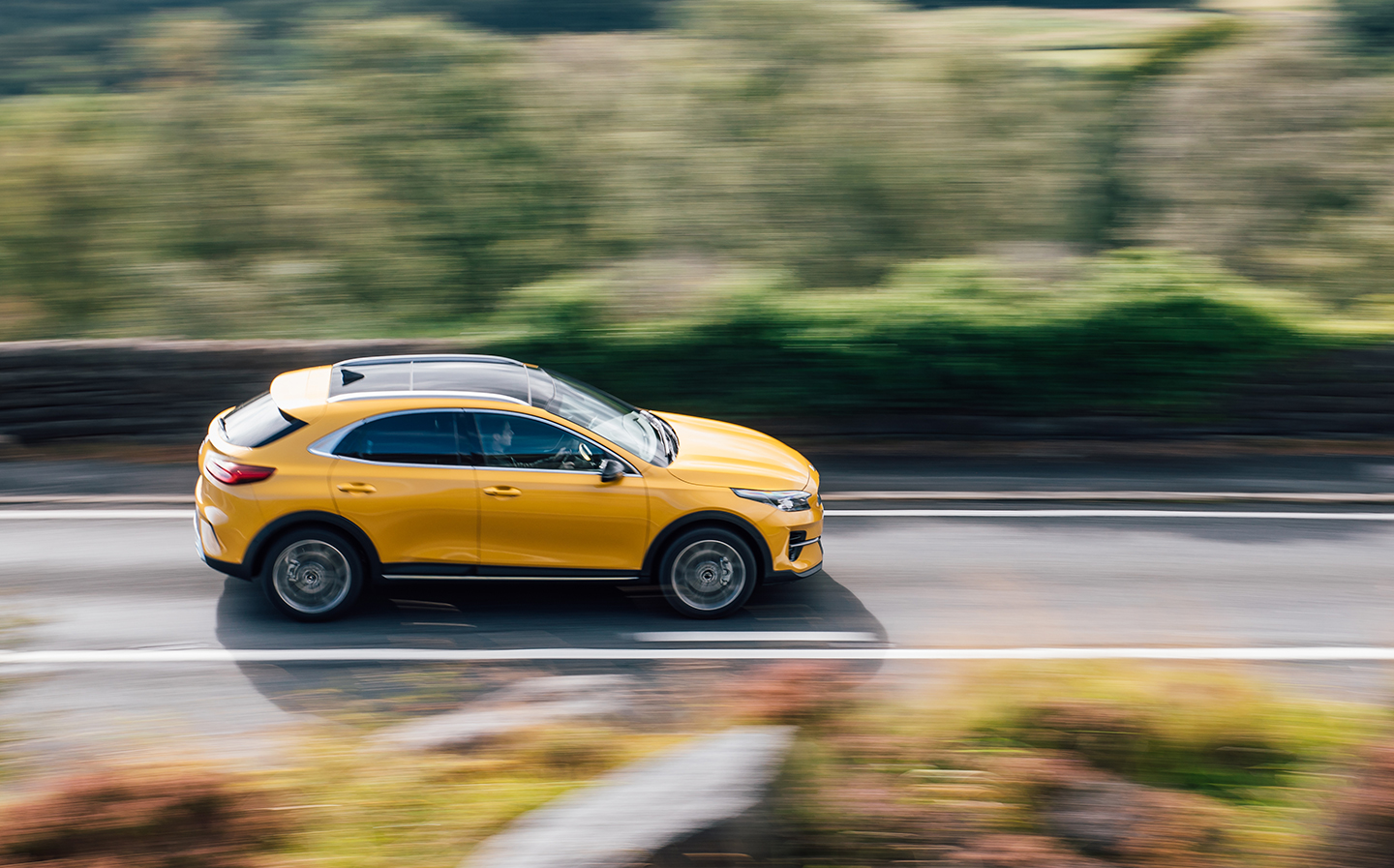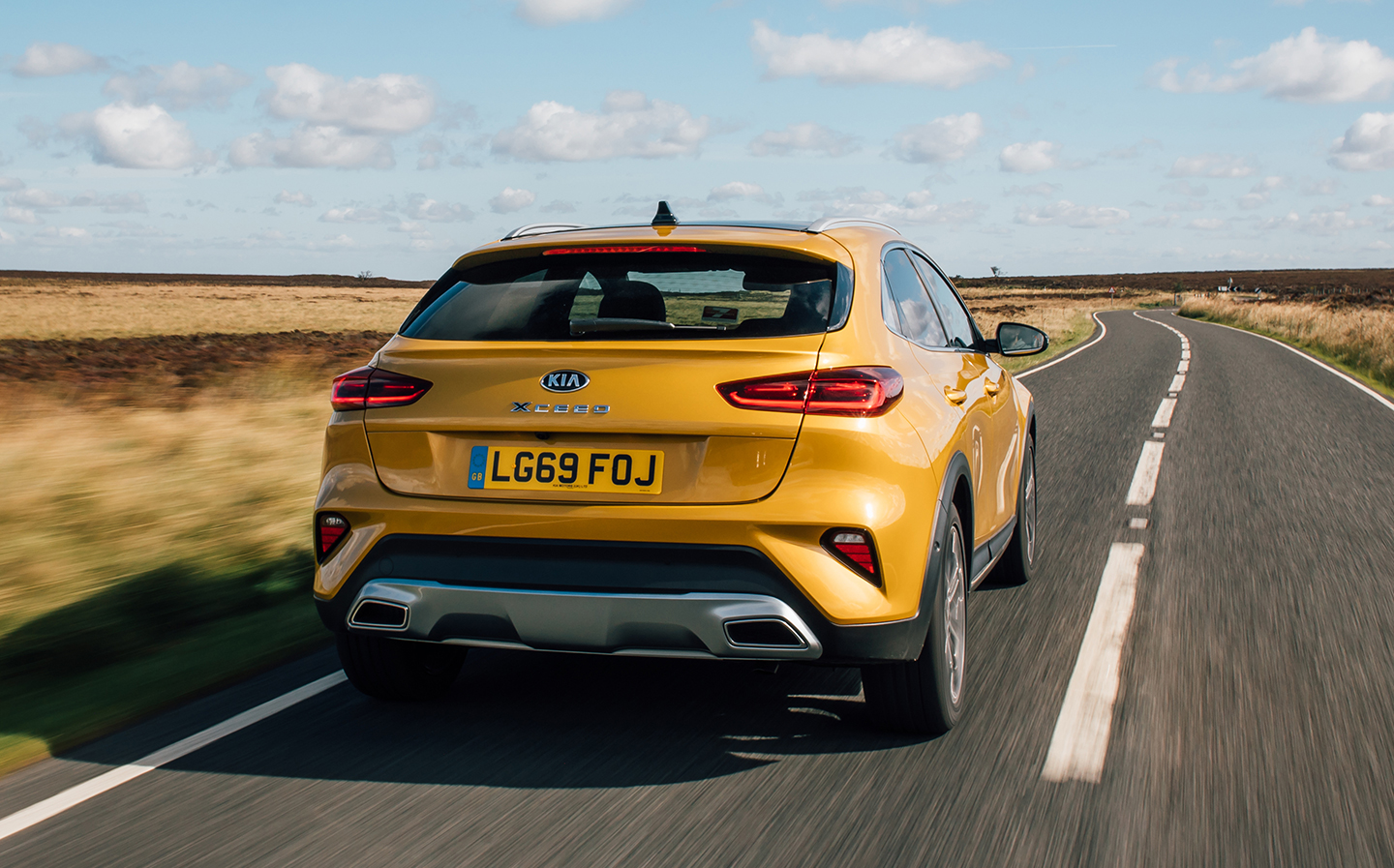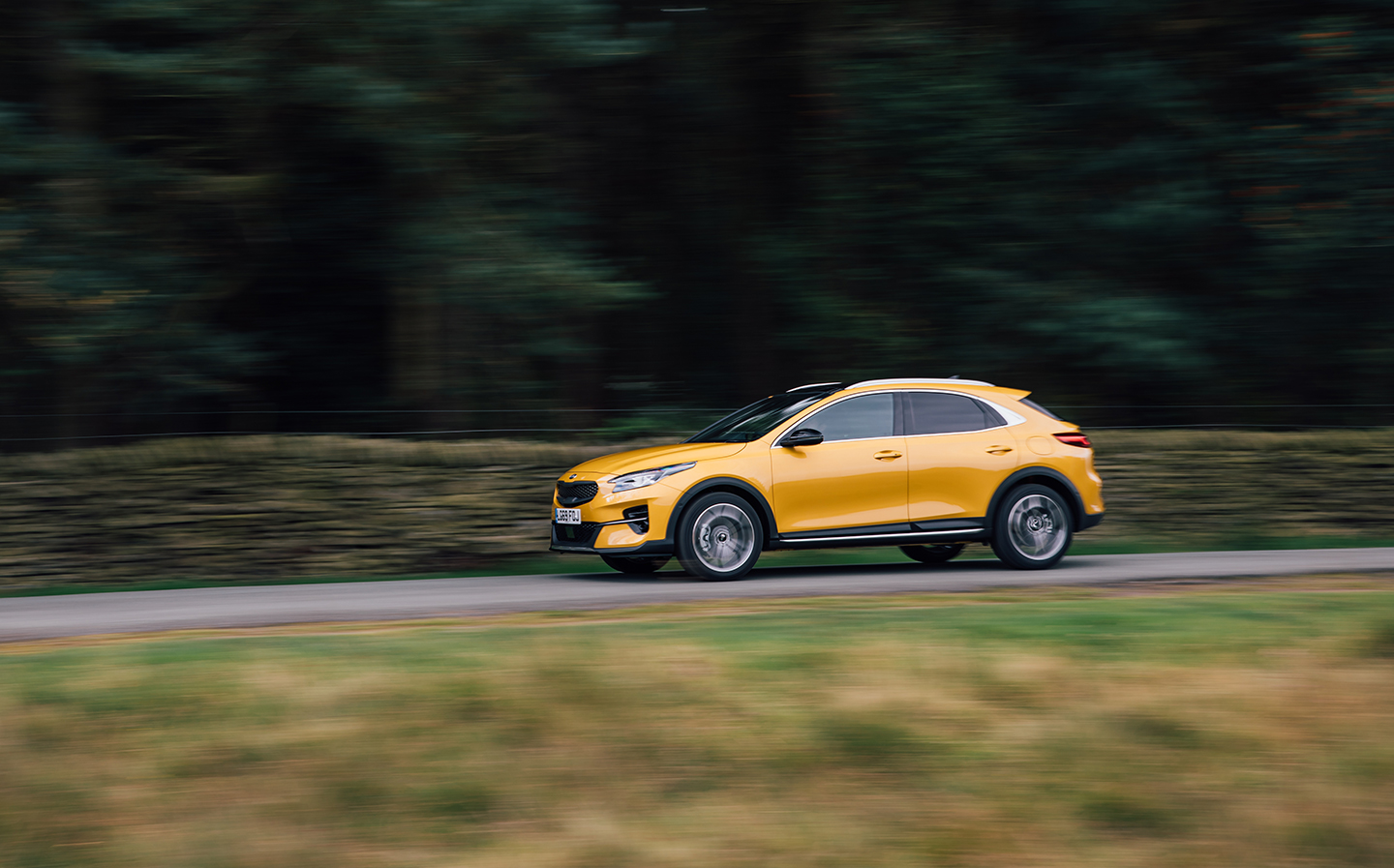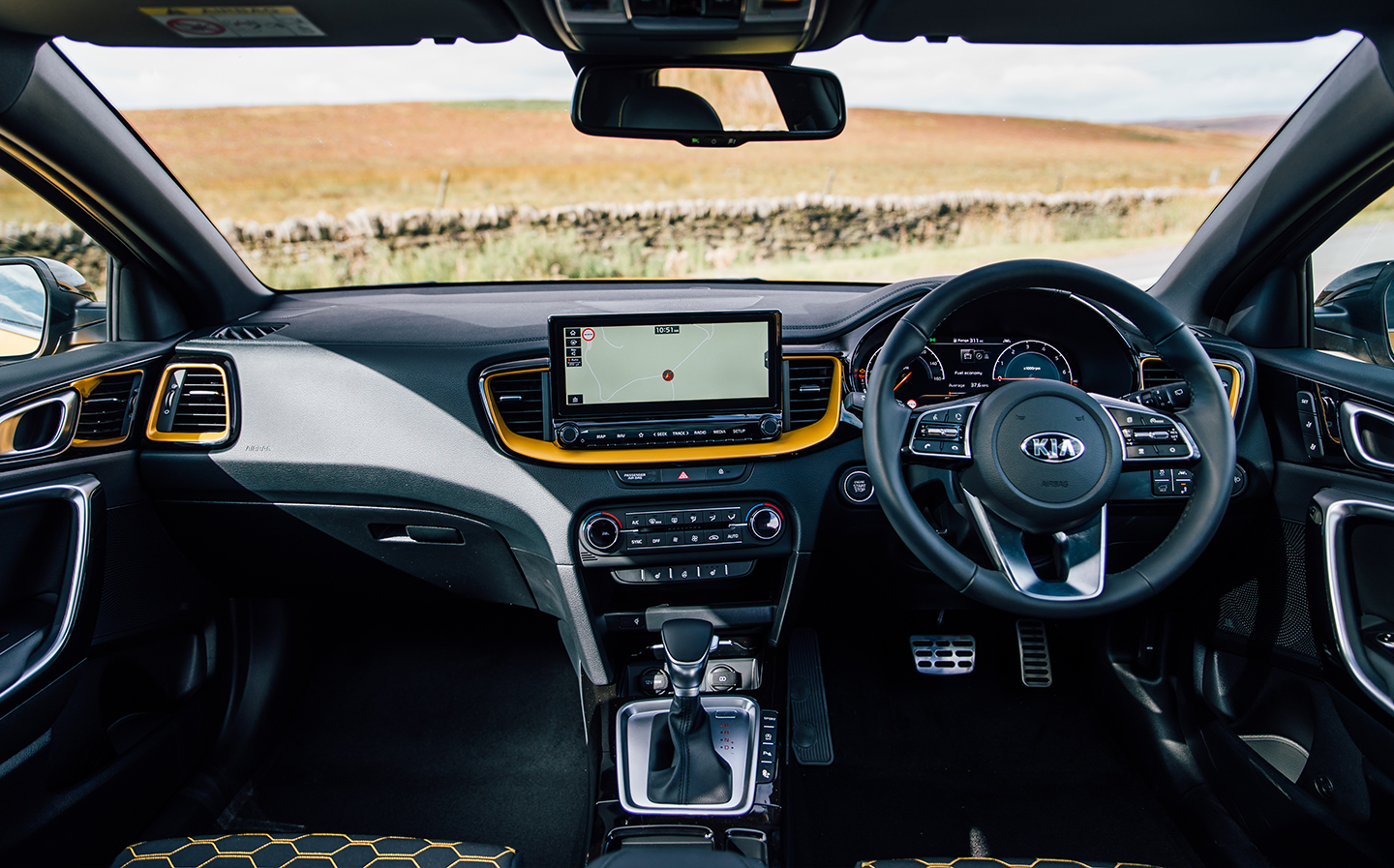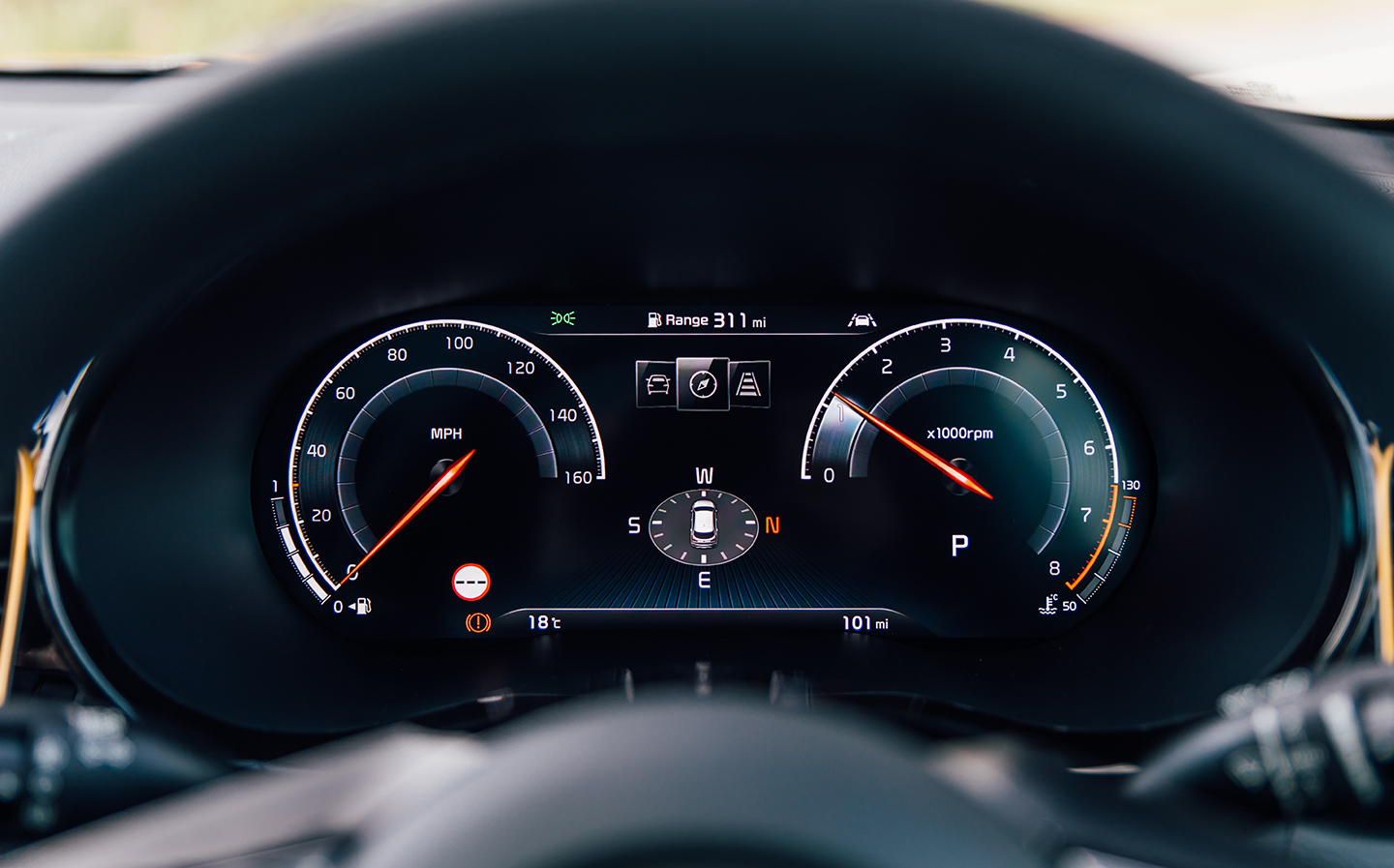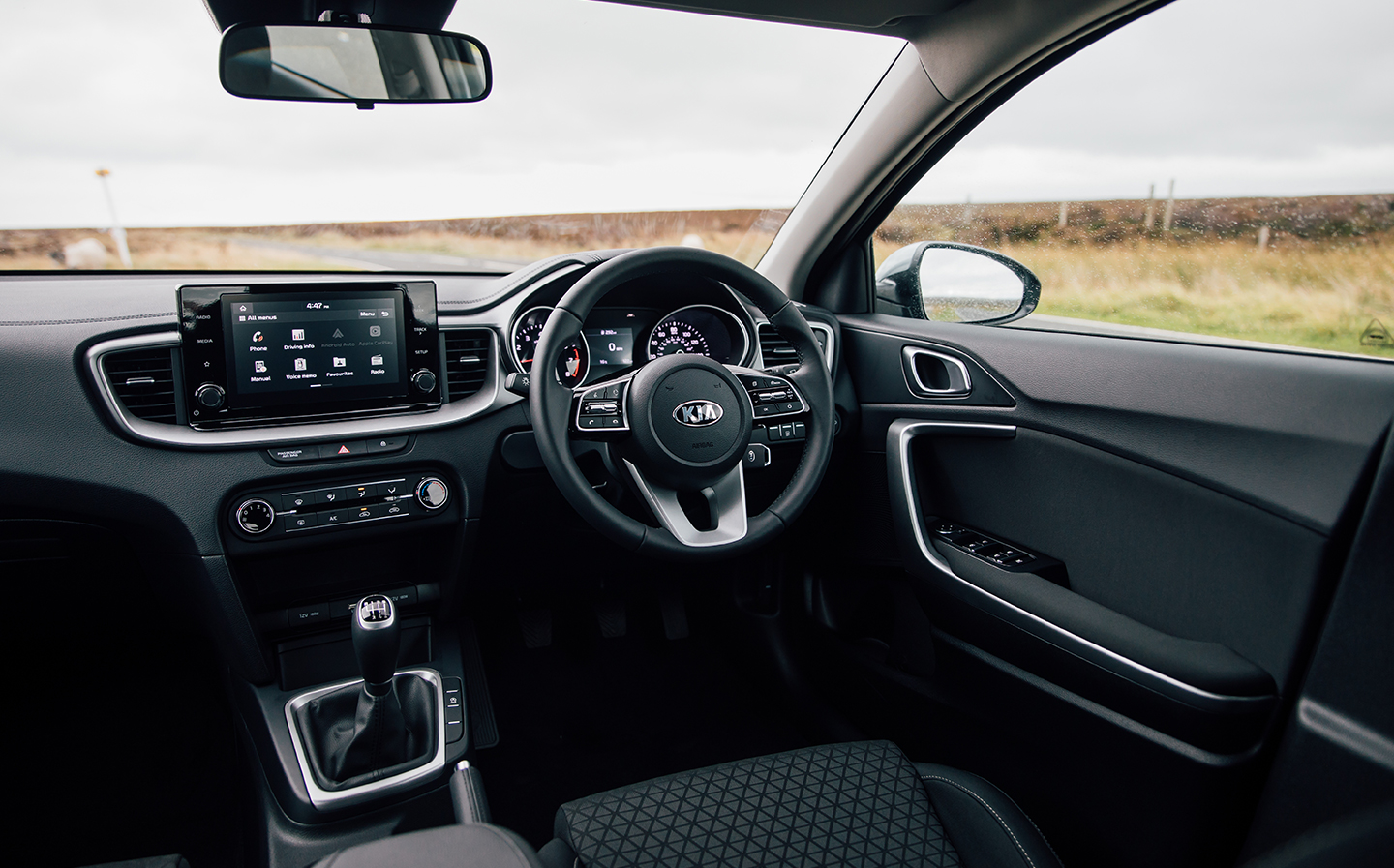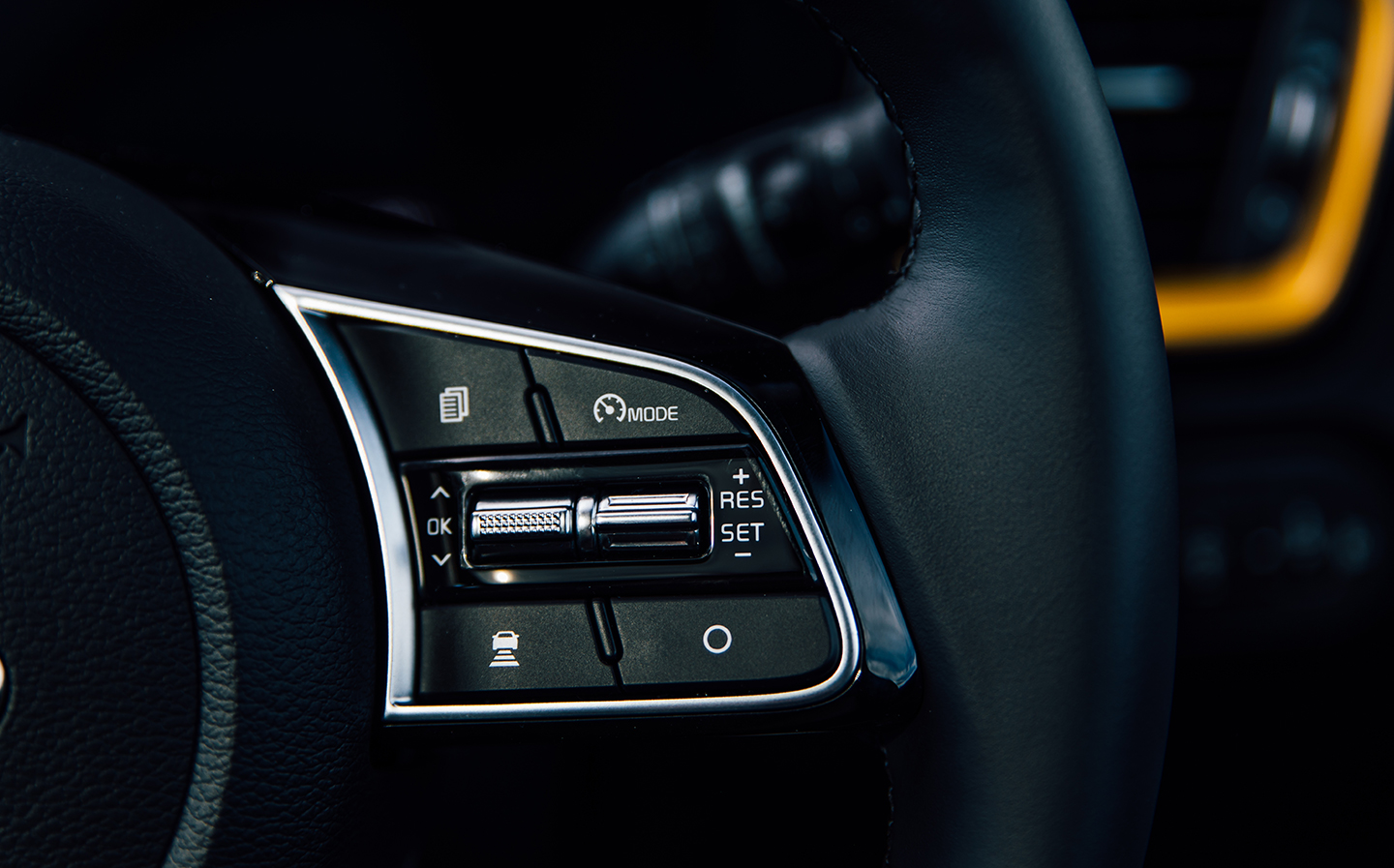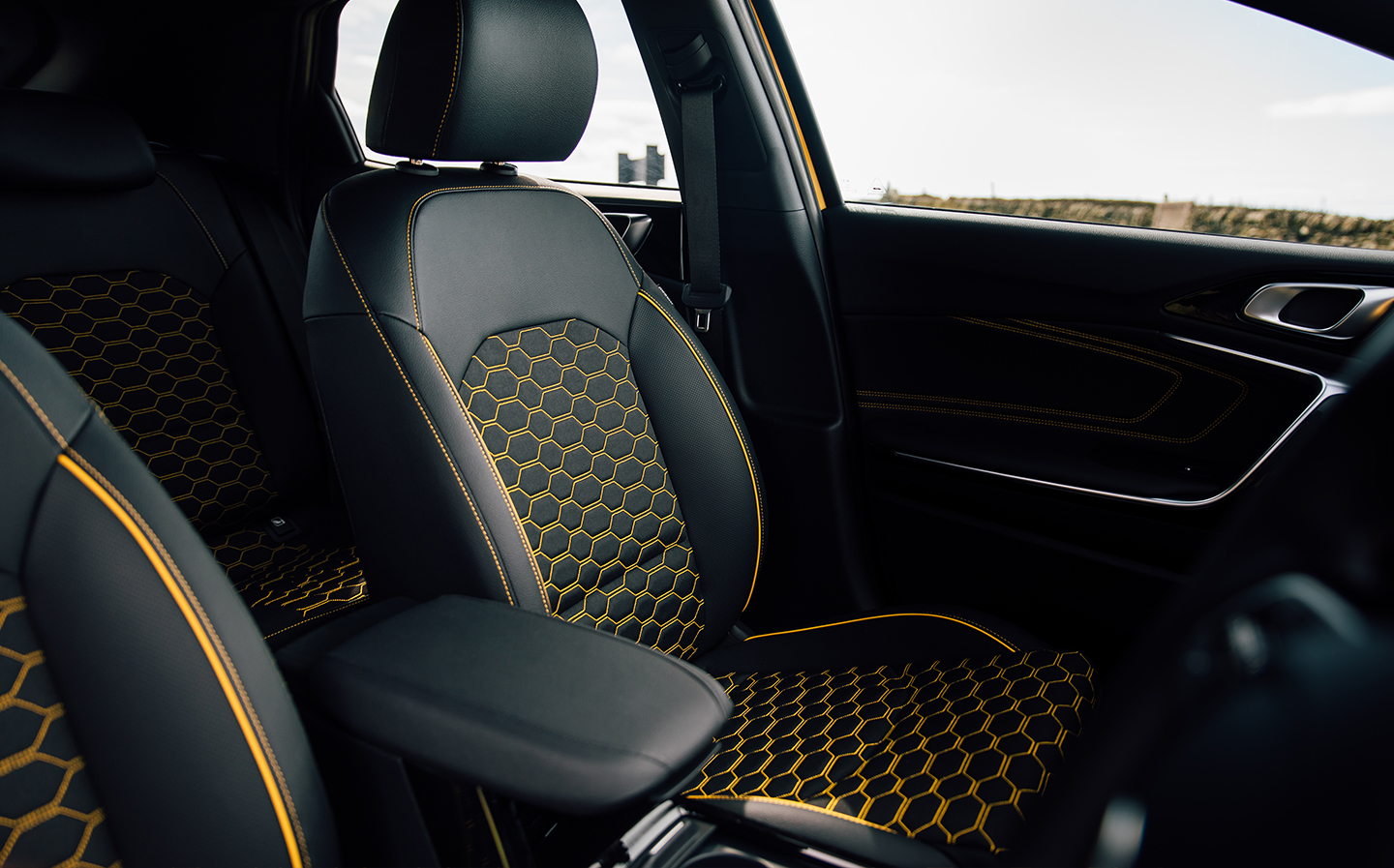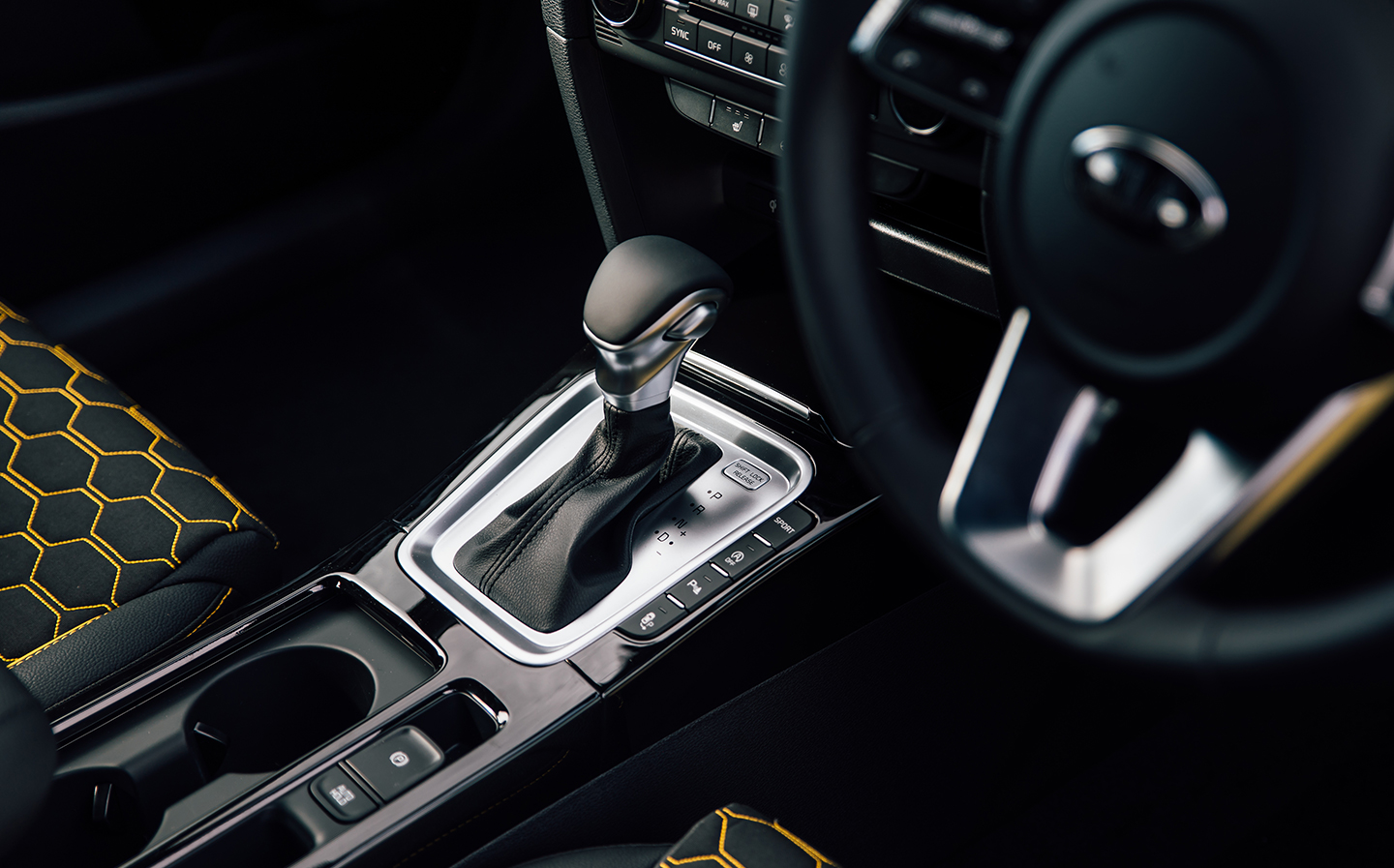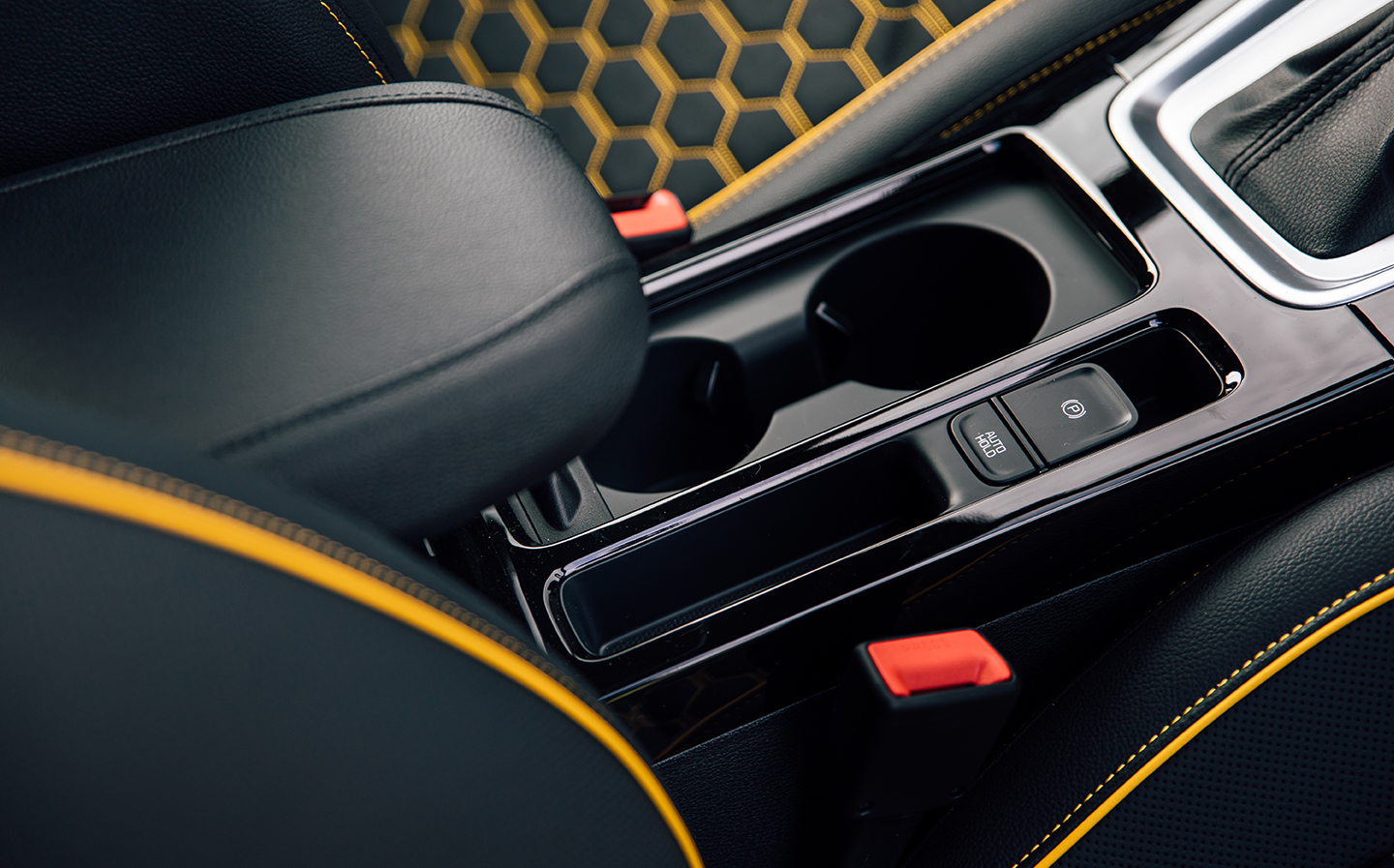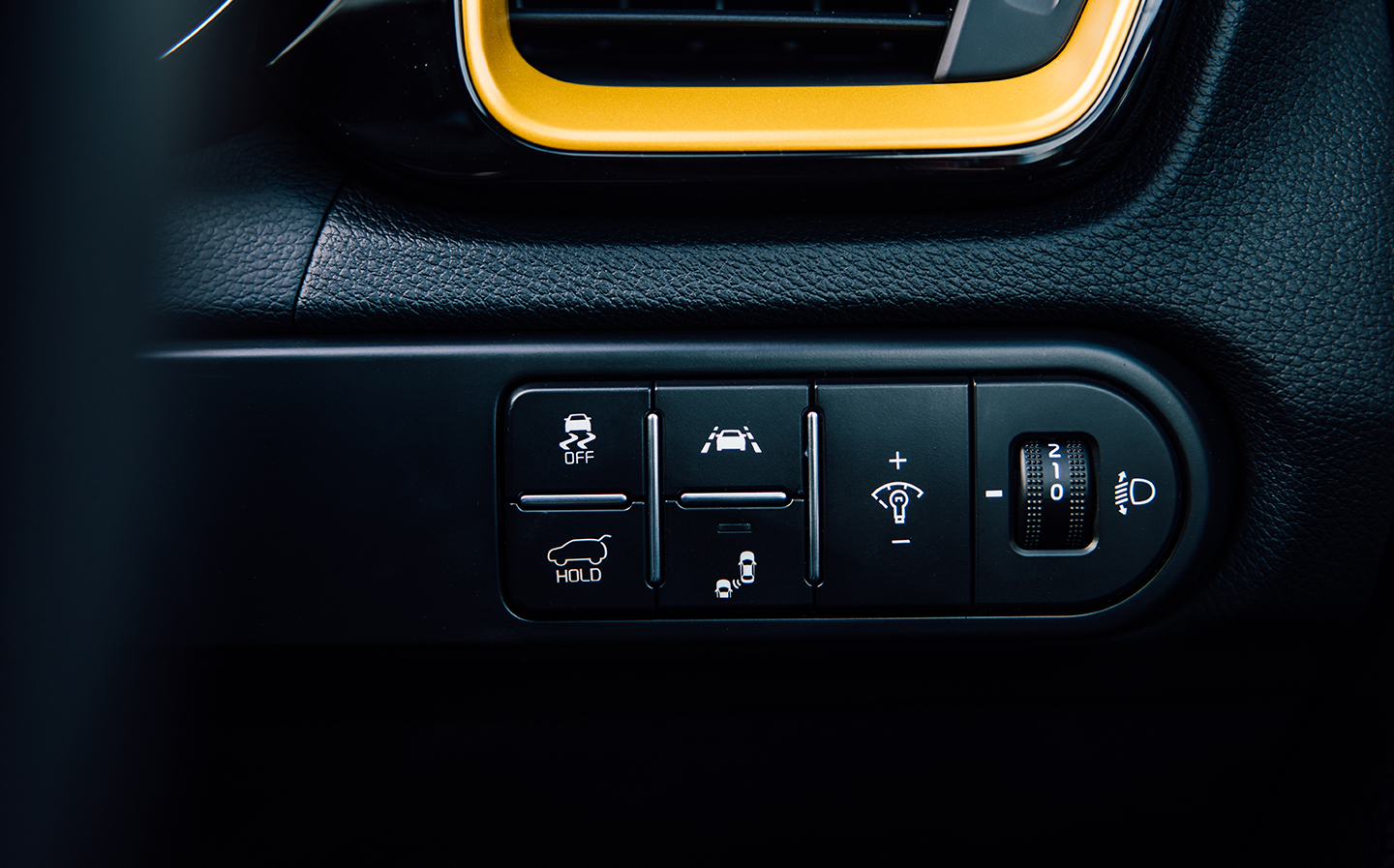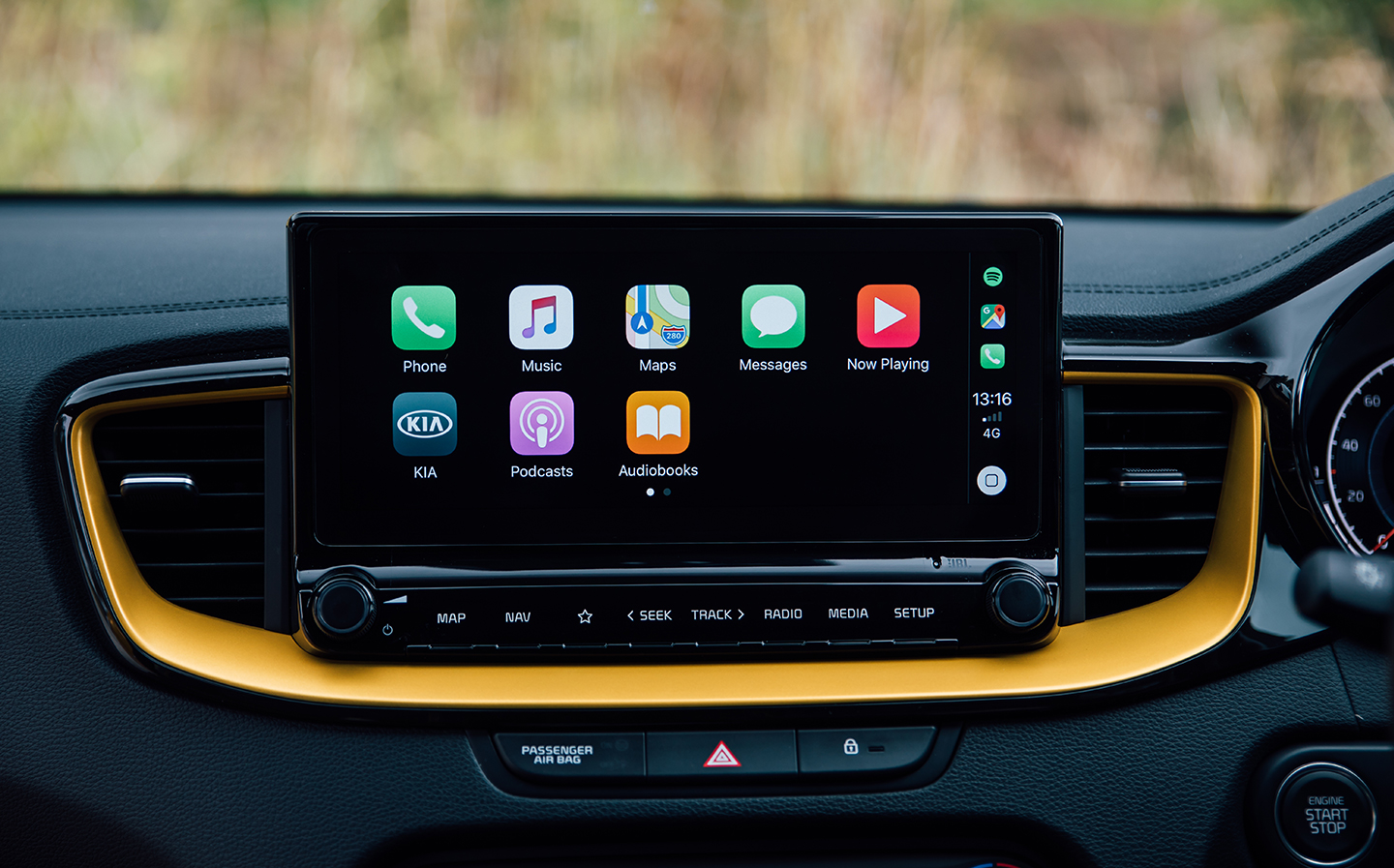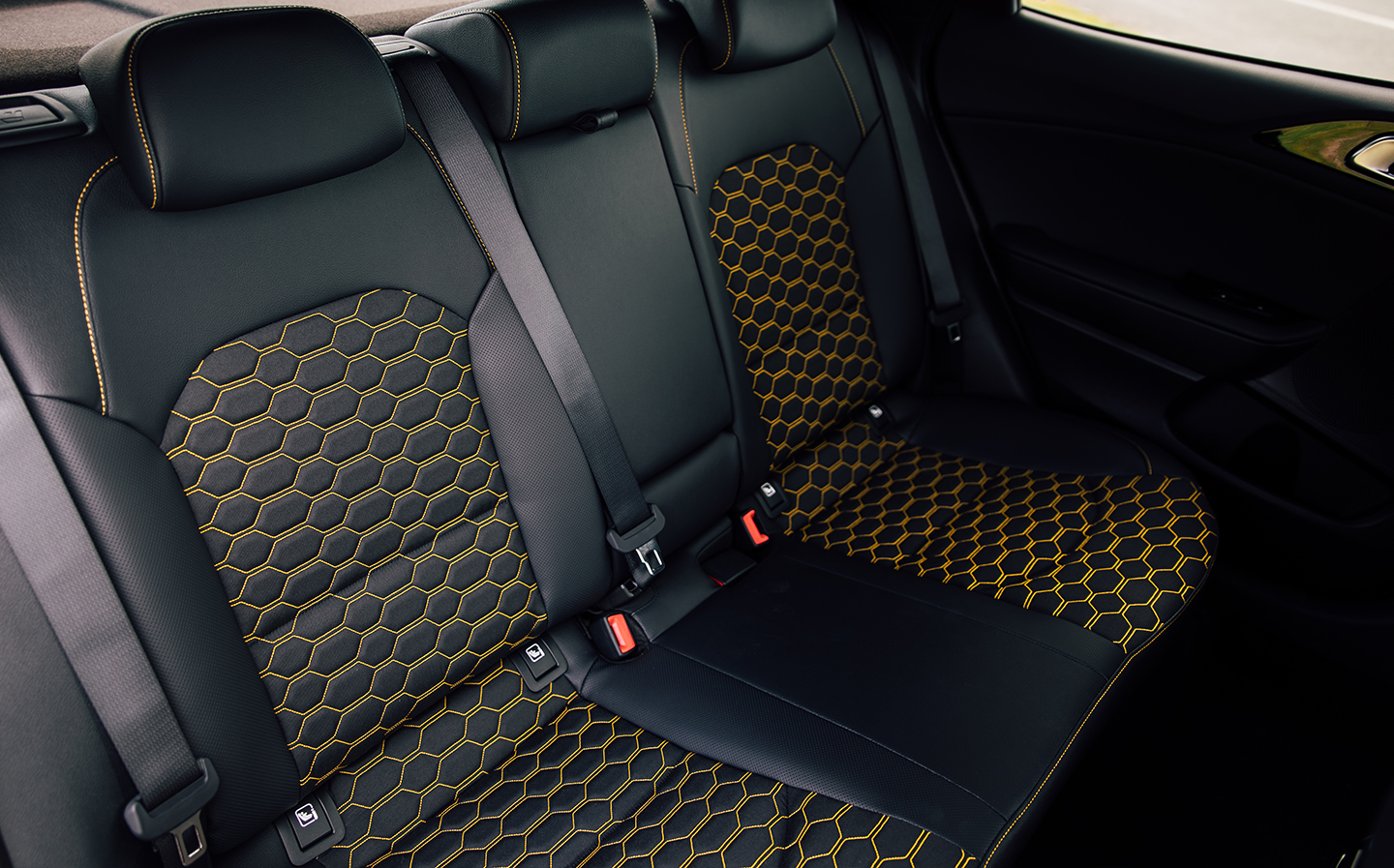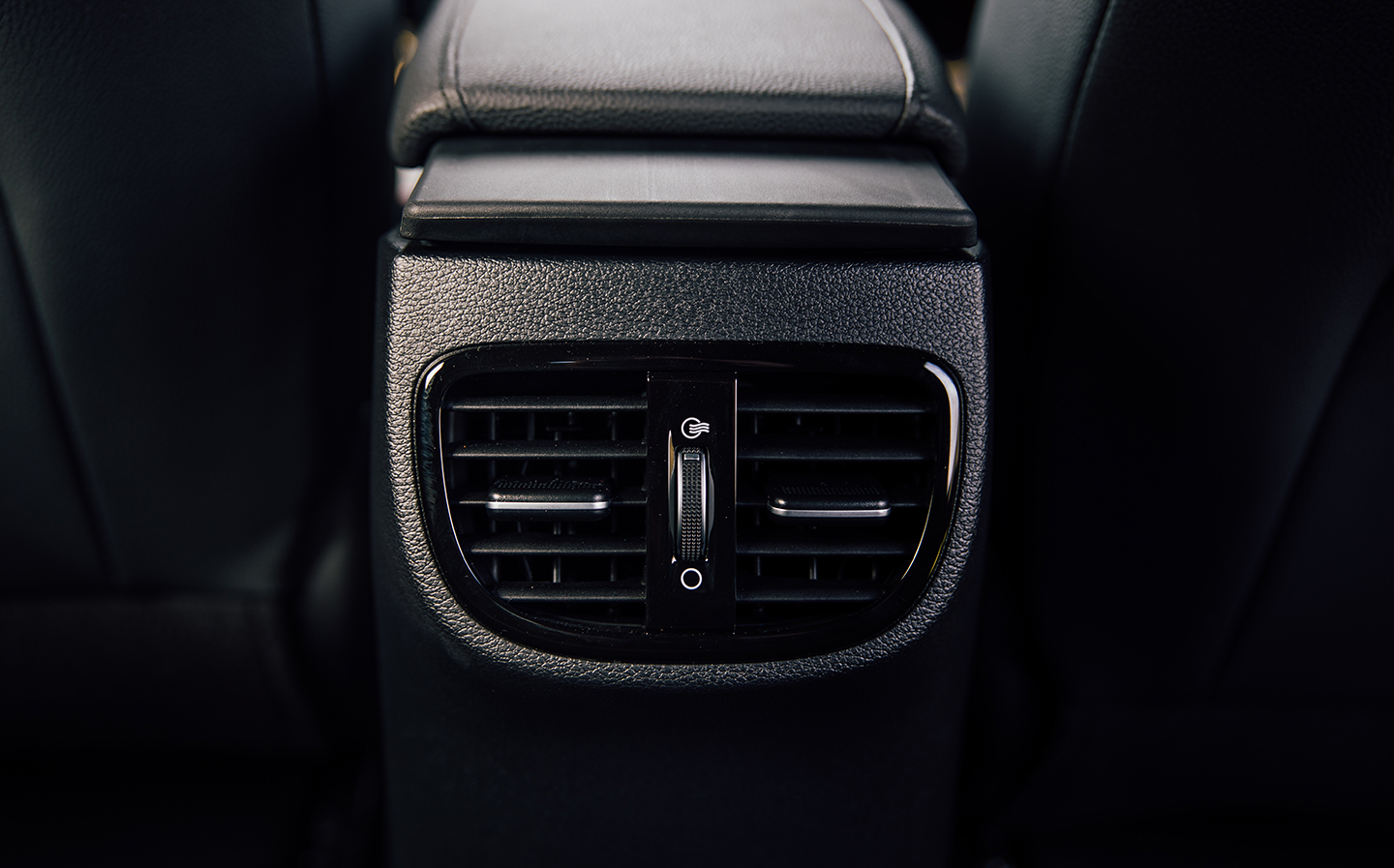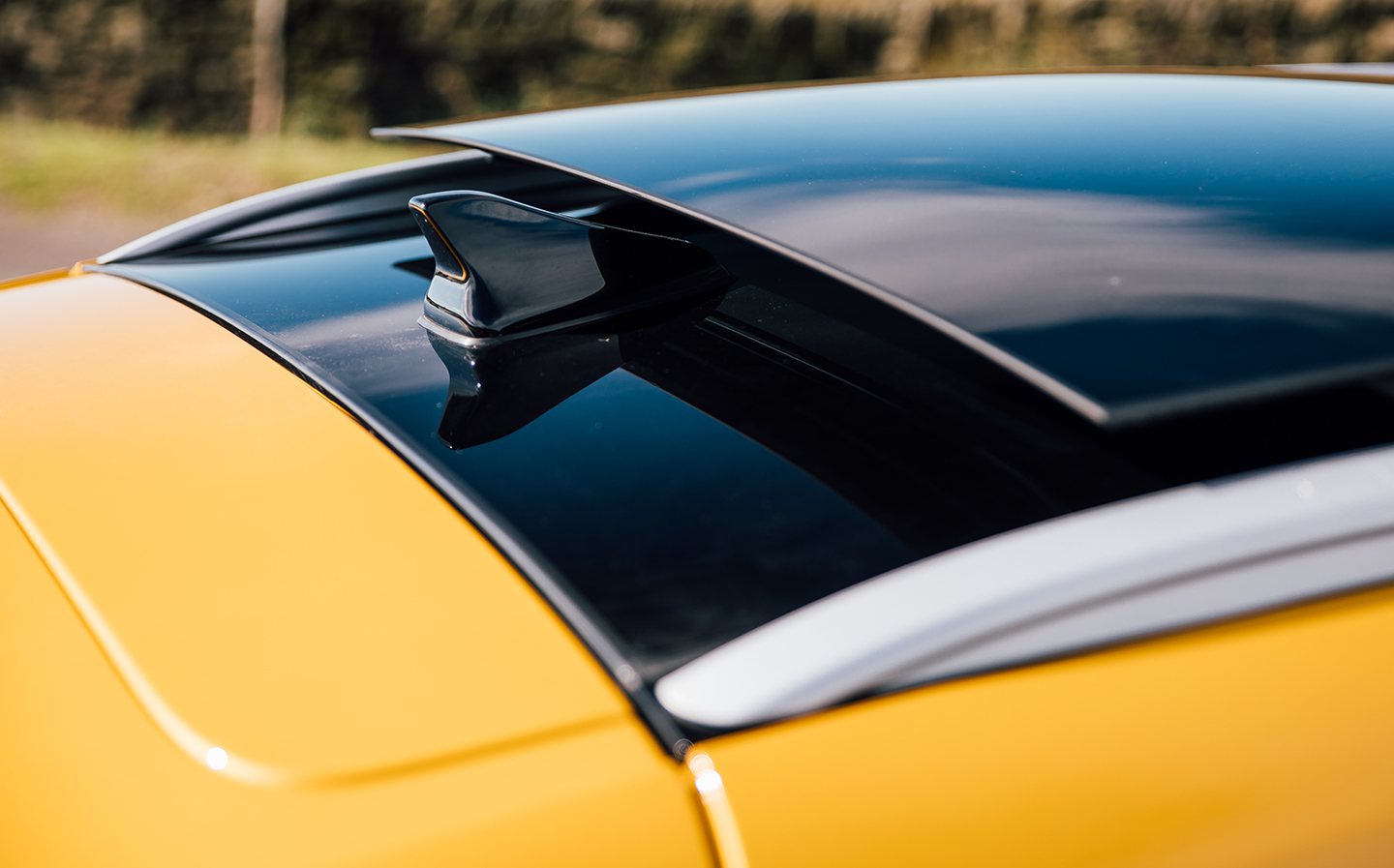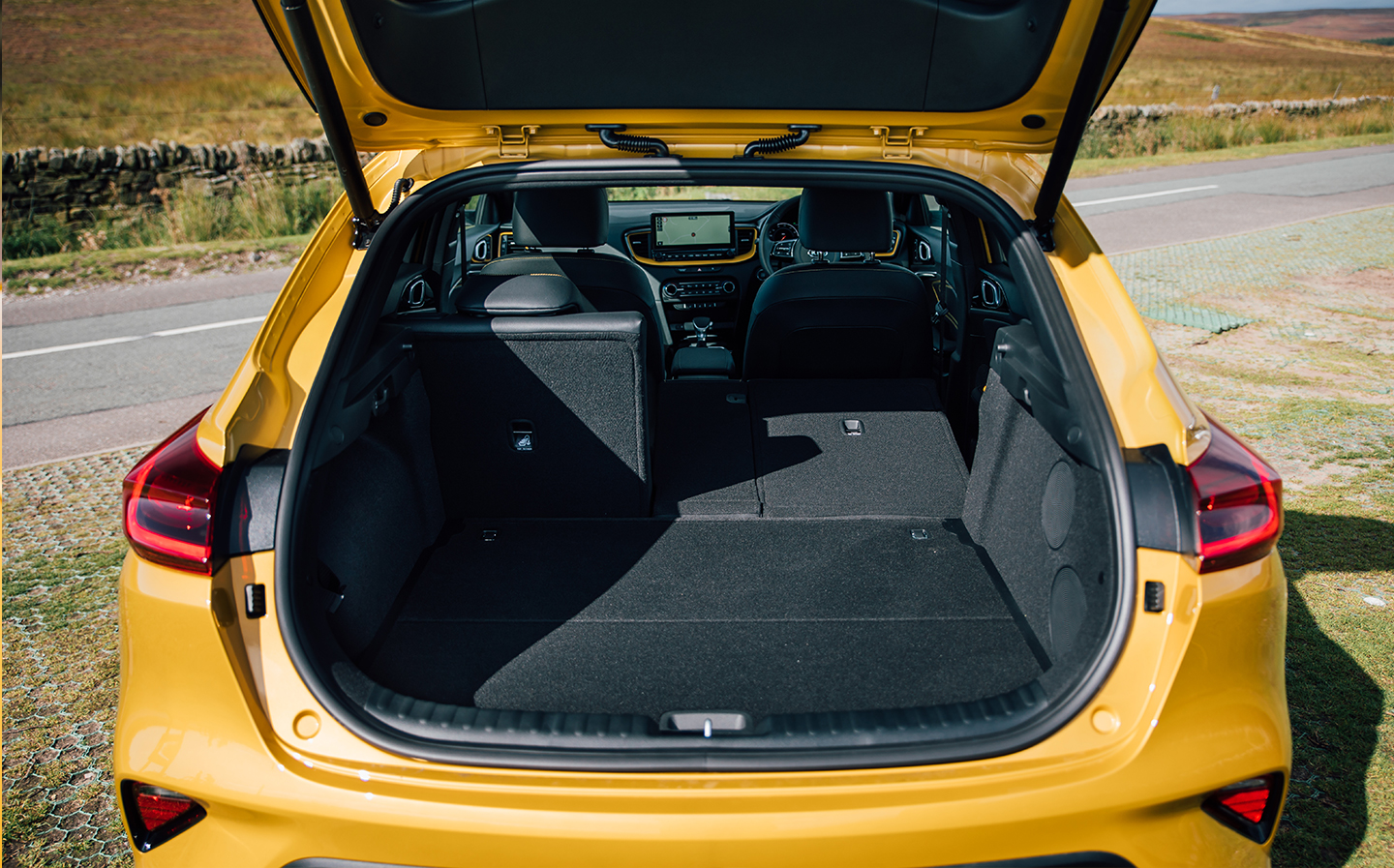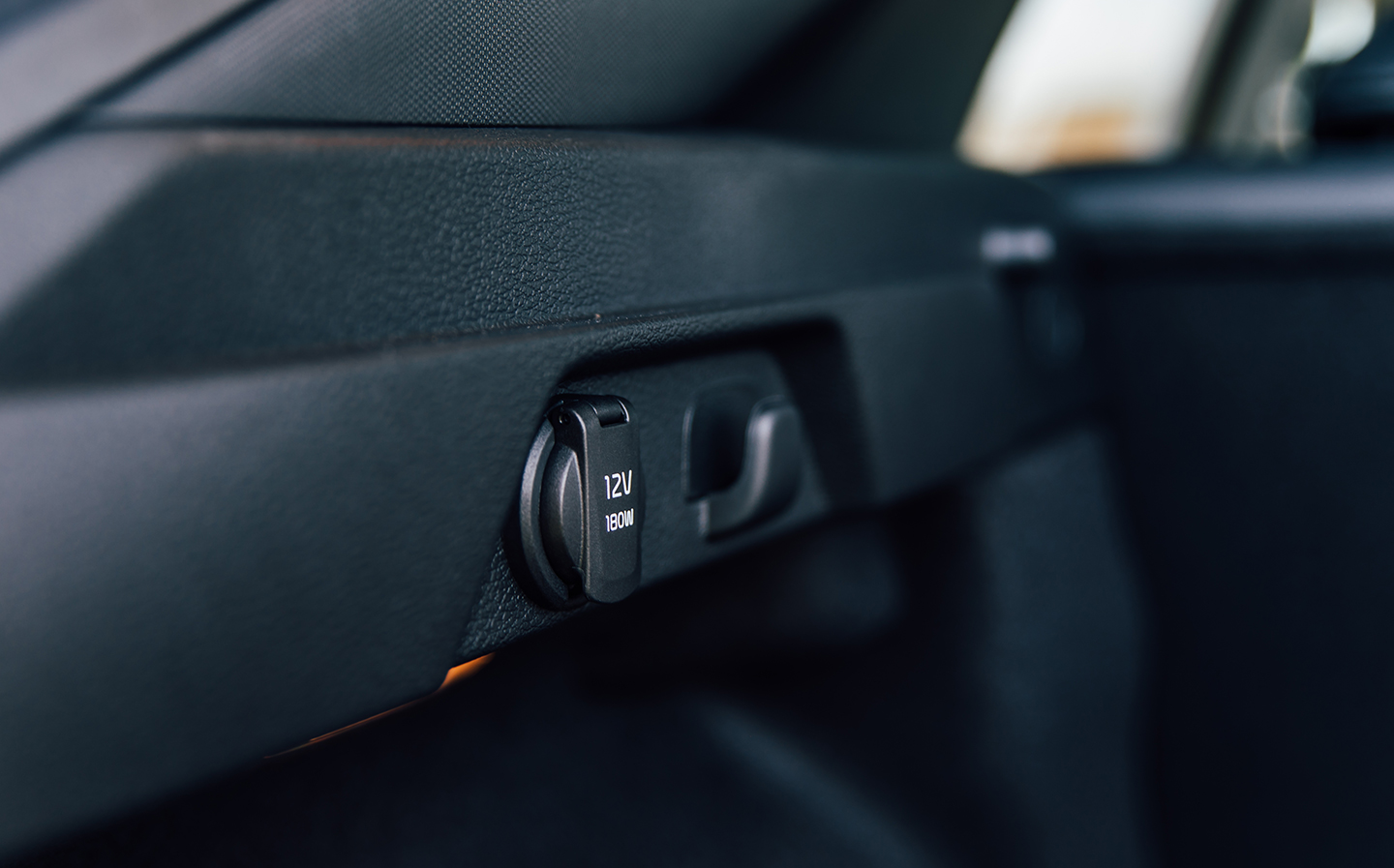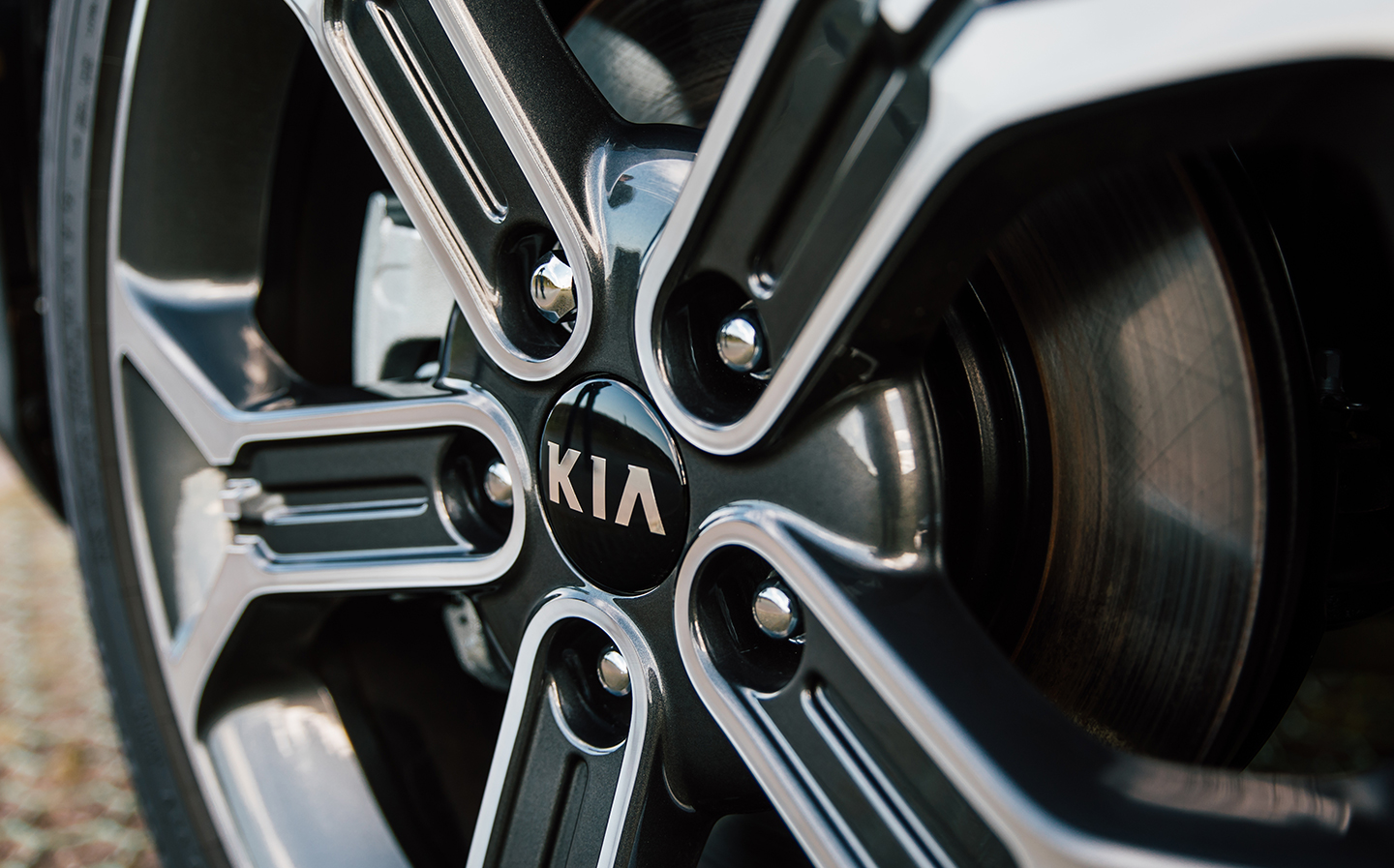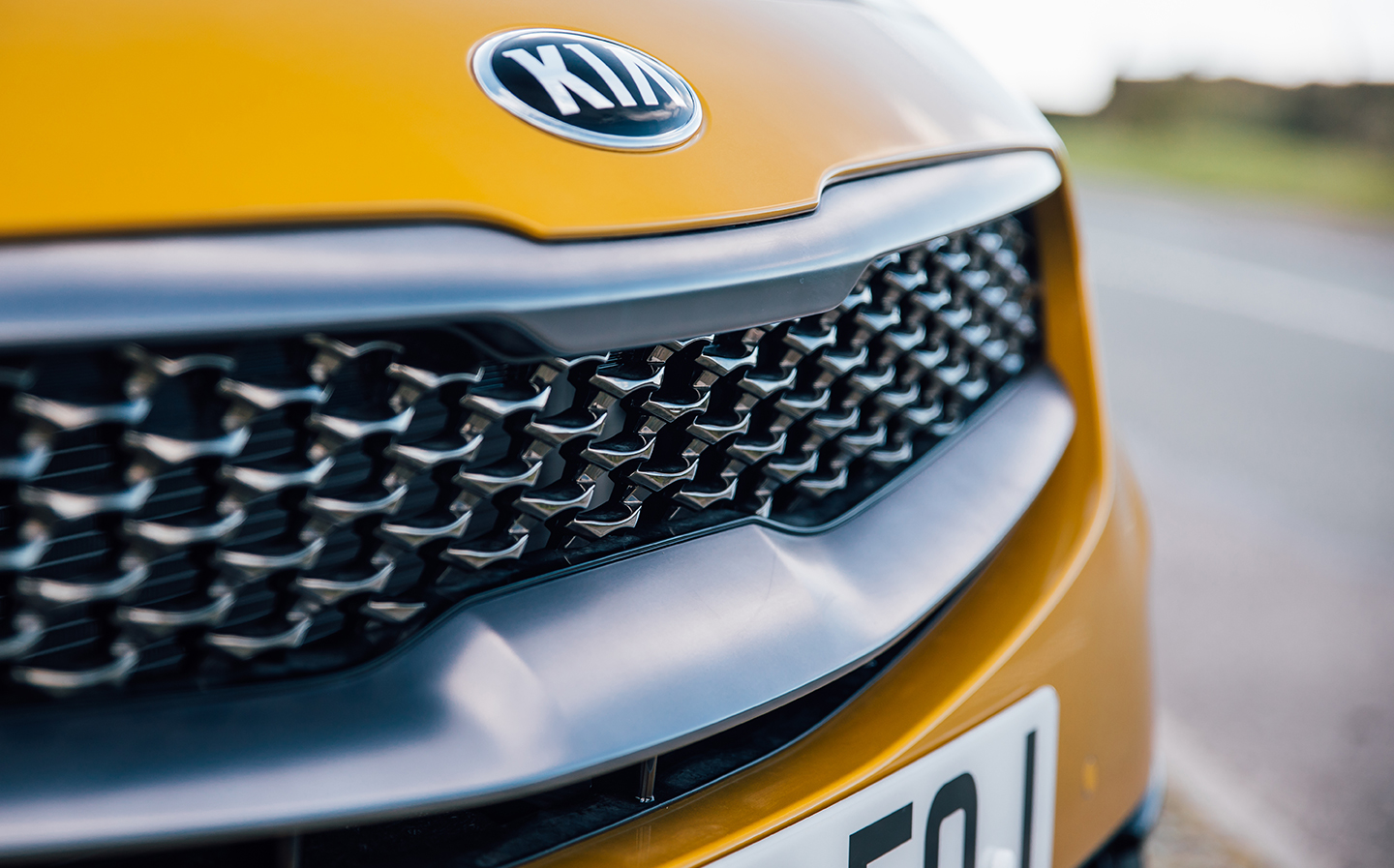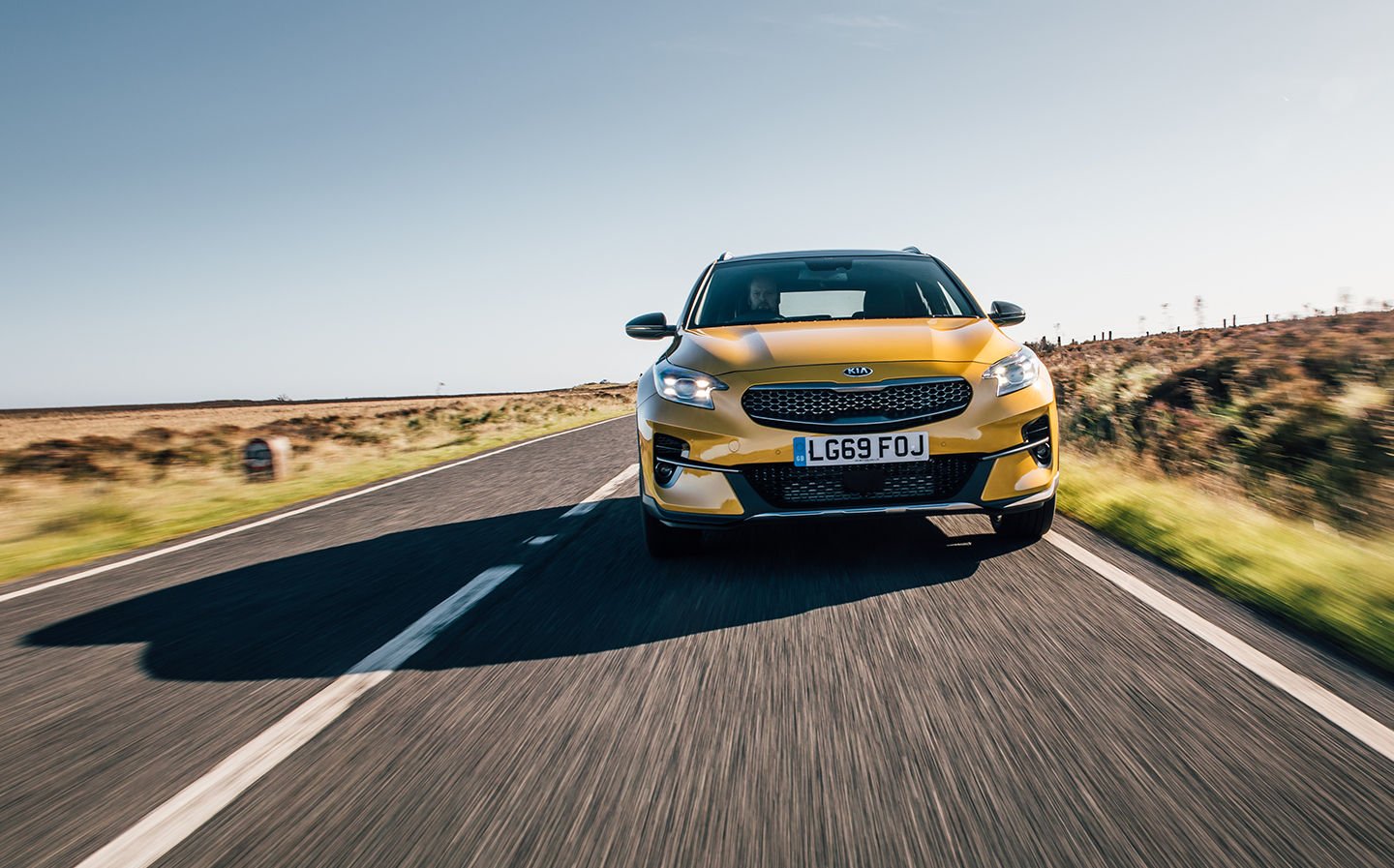2019 Kia XCeed review
Ceed hatchback gets the X factor
THE GROWING Kia Ceed family has a new member – the XCeed. As the X suggests, it’s a “crossover” version of Kia’s hatchback, sitting somewhere in between the hatch and an SUV. Crossovers are nothing new, of course, and they’ve become more popular than ice cream at a children’s party so every car maker is rushing out high-riding, more rugged versions of their models.
Kia is pitching the XCeed less at those wanting a rougher, tougher version of the Ceed and more at people who want its sporty appeal combined with a slightly more commanding view of the road, though the ground clearance is actually not far off that of the Nissan Qashqai, which is a bigger car rivalling the Kia Sportage.
Compared with the standard Ceed hatchback, you do get a noticeably higher driving position and – for my 6ft 5in frame – a more comfortable seating arrangement (the Ceed is slightly awkward for very tall drivers, with the knees positioned slightly above the hips).
The XCeed is not a massive car, though – nowhere near as high-riding as the Sportage SUV. It’s probably best to think of it in terms of its urban crossover rivals, which include the Seat Ateca, VW T-Roc, Toyota C-HR. Kia thinks its higher spec XCeeds are stylish and luxurious enough to take on the Mercedes GLA and DS 3 Crossback, too.
The popularity of compact crossovers means it could also steal sales from more traditional hatchbacks like the Ford Focus, VW Golf and Vauxhall Astra.
It’s a good-looking car, as crossovers go, with a relatively long bonnet capped with Kia’s traditional tiger nose grille, though with the “dual blade” element that also appears on the smaller Rio-based Stonic. The rear end is particularly pleasing to the eye, with a coupé-like sloping roofline, a rear diffuser and pinched horizontal line running below the back window, across the tailgate. LED headlights are standard across the range.
The XCeed’s interior is immediately identifiable as a Ceed family model, though the First Edition’s black interior with yellow contrast stitching and yellow trim elements is exclusive to the XCeed and really quite striking. It won’t be to everyone’s tastes, but the lower spec 3 trim offers a more conservative option.
The First Edition versions (which will be no doubt renamed grade 4 in around 12 months’ time) get a fully-digital driver instrument cluster, and both it and the grade 3 models get a big, cinema-aspect 10.25in TFT touchscreen. This is the first time it’s been seen on a Ceed family car but it will filter down to the other models in due course, and a welcome addition it is. It comes with its own sim card, allowing connected services including live traffic updates and weather info, and it will also run both Android Auto and Apple Carplay (as will the standard 8in touchscreen on the grade 2 models).
A smartphone app called UVO connect means you can also select a destination and send it to the car, meaning you don’t have to re-enter it via the touchscreen after climbing aboard. UVO Connect also allows you to monitor the tyre pressures, check the vehicle’s location (in case you can’t remember where you parked it), and make sure the XCeed is locked.
Kia thinks its higher spec XCeeds are stylish and luxurious enough to take on the Mercedes GLA and DS 3 Crossback
The pièce de résistance of the 10.25in interface, though, is the ability to connect two phones via Bluetooth at once – something we’ve not seen on another car to date. This means that you can run music from a personal phone while also connecting a work phone for calls, or connect your partner’s as well as yours, allowing easy switches between the two for music, podcasts and so on. It’s a brilliant feature.
In terms of space and comfort, there’s a similar amount of room in the cabin to hatchbacks including the Golf and Focus, though the First Edition’s sunroof makes the roof lining much thicker, so taller buyers will do best to avoid the glass roof. And while Kia says the rear seats enjoy more head and leg room than you’ll find in both the Toyota C-HR and GLA, it’s still a bit tight back there for taller passengers. What’s more, as with the Ceed, the XCeed’s back seats also lack USB or other sockets to power phones and tablets, even in First Edition trim, and the door pockets aren’t massive, though rear passengers do at least get a couple of air vents.
On the plus side, children will have a much easier time seeing out of the car than they would in the DS 3 Crossback or Toyota C-HR, which both have criminally small rear windows by comparison, and the top spec XCeed buyers get rear seats that fold 40:20:40 (rather than the 60:40 split on lower grades), meaning you can fold the central armrest flat and pass long items through from the boot (which offers 426 litres of space with the seats upright — 46 more than a Golf).
Kia offers plenty of tech across the range. All cars get DAB radio, cruise control with speed limiter, electric windows all-round, keyless entry, dusk-sensing LED headlights with front fog lights, and electrically-adjusted and heated mirrors. Buyers of entry-level cars will also be reassured that they won’t miss out on safety features like lane-keeping assist and forward collision warning assist, which can slam on the brake if it thinks it’s about to hit a car in front. Grade 3 cars and above will also detect pedestrians and cyclists.
Out on the road there’s even more good news, as for a crossover the XCeed is beautifully balanced through turns and the steering not too light, giving it a sporty feel not too far off a lower-riding hatchback. Grip is good as well, and while the ride errs towards firm it is nowhere near as harsh as you’d find in a Mini Countryman or BMW X2.
Sadly there are no plans at present for a “warm” XCeed, perhaps taking the 201bhp 1.6-litre petrol engine from the sporty Ceed GT, though the top spec 1.4-litre four-cylinder turbocharged motor offers a usable, if not thrilling, 138bhp. Overtaking on country roads – which you may want to do, given the sporty chassis – is possible but an extra bit of poke wouldn’t go amiss.
Switching into sport mode helps, which livens up the 7-speed auto transmission and it selects the best gear while slowing into turns, allowing a speedier exit. In normal mode it is slightly more sluggish when changing down.
The alternative petrol motor, which we also drove, is a 1-litre 3-cylinder (married to a silky 6-speed manual gearbox) that manages just 118bhp and needs to be given a few revs to really wake up. Buyers may appreciate its extra frugality — whereas the 1.4 gets 42.8mpg according to the WLTP test, the 1-litre can manage 44.1-45.6mpg, depending on spec (we managed just under 37mpg and just over 40mpg respectively) — though the extra power available from the bigger engine would make it our choice.
Better economy can be achieved if you pick the sole diesel engine, available for the 2 and 3 grade models only, which manages 52.3mg and 53.3mpg respectively and lower CO2 emissions, meaning an annual tax saving, though unless you’re regularly doing motorway runs, you’re better off with the petrol offerings.
For ultimate fuel-saving, though, you may want to wait until after the New Year, when a plug-in hybrid version of the XCeed will be released with an electric range of around 30 miles (before the combustion engine kicks in and it works like a more traditional hybrid). That will allow short commutes, school runs and other errands to be completed exhaust emission free, on pure-electric power.
The only real grumble we had with the XCeed was its noise levels at higher speeds, with a slight boom through the cabin from the tyres, especially on harsher surfaces. This is regardless of whether the car is running on the grade 2 16in alloys or the grade 3/ First Edition 18in wheels, with their narrower band of rubber.
But given the tech loaded aboard as standard and with prices starting at £20,795, anyone in the market for a compact urban crossover should head over to a Kia dealer for a test. And take a second phone along with you if you’re looking at the 3 or First Edition models.
UK all-new Kia XCeed line-up
| Model | Power bhp | Torque Nm | 0–60 sec | Max speed mph | Combined mpg (WLTP) | CO2(NEDC 2.0) |
|---|---|---|---|---|---|---|
| ‘2’ 1.0 T-GDi 6-speed manual ISG | 118 | 172 | 10.9 | 115 | 45.6 | 124 |
| ‘2’ 1.6 CRDi 6-speed manual ISG | 114 | 280 | 11 | 118 | 52.3 | 109 |
| ‘3’ 1.0 T-GDi 6-speed manual ISG | 118 | 172 | 10.9 | 115 | 44.1 | 129 |
| ‘3’ 1.4 T-GDi 6-speed manual ISG | 138 | 242 | 9.1 | 124 | 42.8 | 142 |
| ‘3’ 1.4 T-GDi 7-speed auto DCT ISG | 138 | 242 | 9.2 | 124 | 40.9 | 134 |
| ‘3’ 1.6 CRDi 6-speed manual ISG | 134 | 280 | 10.2 | 122 | 53.3 | 116 |
| ‘First Edition’ 1.4 T-GDi 6-speed manual ISG | 138 | 242 | 9.1 | 124 | 42.8 | 142 |
| ‘First Edition’ 1.4 T-GDi 7-speed auto DCT ISG | 138 | 242 | 9.2 | 124 | 40.4 | 134 |
Pricing
| Model | OTR £ |
|---|---|
| ‘2’ 1.0 T-GDi 6-speed manual ISG | £20,795 |
| ‘2’ 1.6 CRDi 6-speed manual ISG | £22,045 |
| ‘3’ 1.0 T-GDi 6-speed manual ISG | £23,295 |
| ‘3’ 1.4 T-GDi 6-speed manual ISG | £24,095 |
| ‘3’ 1.4 T-GDi 7-speed auto DCT ISG | £25,195 |
| ‘3’ 1.6 CRDi 6-speed manual ISG | £25,345 |
| ‘First Edition’ 1.4 T-GDi 6-speed manual ISG | £28,095 |
| ‘First Edition’ 1.4 T-GDi 7-speed auto DCT ISG | £29,195 |
| Premium paint is chargeable at £570 (including VAT) |
| Advanced Driving Assistance pack (ADAP) is a chargeable option at £250 (including VAT) for manual transmission, and £750 when paired with DCT transmission. |


